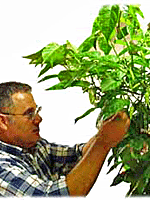 To preserve and promote cultural and natural heritage, the proposed Nation’s Oldest Port National Heritage Area Alliance is working with community partners to develop a printed and on-line directory that highlights local and place-based agricultural and culinary resources of the region.
To preserve and promote cultural and natural heritage, the proposed Nation’s Oldest Port National Heritage Area Alliance is working with community partners to develop a printed and on-line directory that highlights local and place-based agricultural and culinary resources of the region.
This guide will feature area producers, grocers, farmers’ markets, farm stands, community supported agriculture, fish camps and restaurants who offer locally grown or caught foods, and cuisine prepared from local produce and heritage recipes.
The directory underway is a pioneering effort for northeast Florida to create an agricultural and culinary trail linking suppliers and consumers within the local food supply chain. It will enhance connections between local food producers and food users, facilitating the sale and purchase of fresh foods.
The Heritage Area Alliance, St. Johns and Flagler Counties’ Extension Services, Slow Food First Coast, First Coast Technical Institute Culinary Arts Program, Florida Agricultural Museum, the Menorcan Society, and St. Augustine Lighthouse and Museum are collaborating on this project and would like to invite other interested groups to participate.
Information about local heritage foods, such as shrimp, oysters, datil peppers, cabbage, potatoes, citrus and honeys also will be included; as will locations and schedules of community supported agriculture, regional farmers’ markets and farms stands, and a seasonal availability chart for this area.
“I think we are realizing that buying local foods can help our health, the environment and the economy by promoting nutritious diets, reducing food transport related costs, preserving food traditions and stimulating agri-tourism, a form of heritage based economic development,” said Leslie White, coordinator for the proposed Nation’s Oldest Port National Heritage Area. “Buying local and heritage foods also will be easier and more enjoyable with the guide.”
In this guide, local food will be defined as food produced near the nation’s oldest port region (St. Johns and Flagler Counties) and the oldest continually occupied city of St. Augustine. Heritage food will be defined as locally produced food linked to the region’s history and cultural identity, including traditionally grown crops, culturally traditional foods and wild plants unique to this region.
“The local foods guide will document the First Coast’s unique culinary offerings and make our resources accessible to residents and visitors alike, so that they may enjoy the bounty of foods our region has to offer. The guide will promote our local foodways in a way that is true to history yet in keeping with the current times. People are seeking out local, sustainable foods and heritage related activities, and this guide will help foster greater interest in both,” said Richard Villadoniga, leader of Slow Food First Coast.
A follow-up meeting is scheduled April 28th, 4:15 p.m., at the St. Johns County Public Library Southeast Branch. For information, contact Leslie White, Heritage Area Alliance coordinator at lw****@*******************se.com or David Dinkins, St. Johns County Extension director at di*****@*fl.edu.
Discover more from HISTORIC CITY NEWS
Subscribe to get the latest posts sent to your email.

